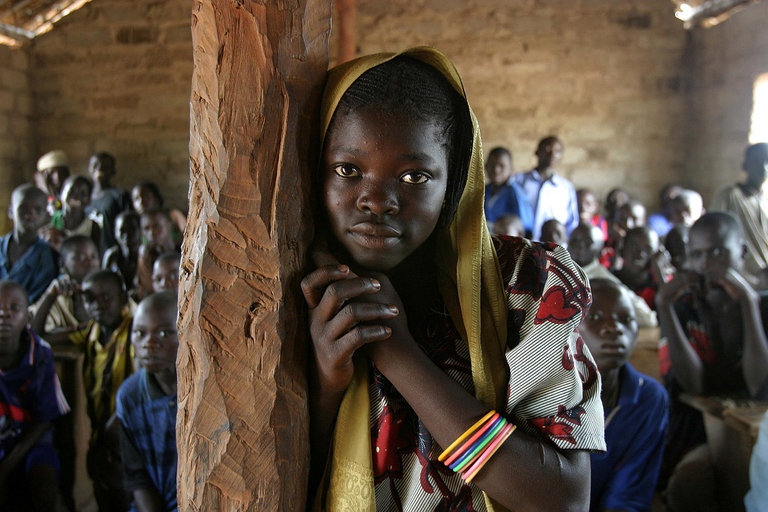
The Amazon became an alternative classroom during the pandemic. Now, the educational forest in Batraja, Bolivia, lives on to teach children and adults the value of nature.
Despite the abuses of patriarchy, women are rising up to improve their conditions. The origins of International Women’s Day and why we celebrate it.
International Women’s Day was celebrated for the first time in 1909 in the United States, held by the country’s Socialist Party, and was formalised at the international level in 1911. Yet, after over a hundred years, women all around the world still face numerous challenges and fight against a patriarchal and sexist system.
The celebration was recognised by the United Nations in 1977 and aims to condemn all forms of inequality, sexism and violence against women.”Let’s make sure women and girls can shape the policies, services and infrastructure that impact all our lives”, in the words of UN Secretary-General António Guterres.”And let’s support women and girls who are breaking down barriers to create a better world for everyone”.
The 2019 theme, Think equal, build smart, innovate for change, focuses on innovative ways in which we can advance gender equality and women’s empowerment. The fundamental idea is to accelerate the 2030 Agenda’s Sustainable Development Goals, including ensuring access to education for all boys and girls, ending all forms of discrimination against women and girls, as well as all forms of violence in the public and private spheres, including trafficking and sexual and other types of exploitation, eliminating all harmful practices, such as child, early and forced marriage and female genital mutilation.
However, in many countries attitudes remain retrograde and close-minded and power continues to be abused everyday. For example, the global gender pay gap, the difference between the average salaries of men and women, is 23 per cent, according to the UN, defined by Anuradha Seth, special advisor economic to the international body, as “the greatest theft in history”. Some changes are being made though, thanks to those women trying to change their conditions and mould the surrounding world through their ideas, by challenging the status quo and guiding their communities. An example is Berta Caceres, once leader of the Council of Indigenous and Popular Organizations of Honduras (COPINH) who fought for protecting her community’s rights and lands from deforestation and exploitation. Yet she was killed just a few prior to International Women’s Day in 2016.
Women’s roles are much too underestimated. According to US anthropologist and palaeontologist Nancy Makepeace Tanner, maternal care was the determiner of anthropomorphic apes’ development towards human evolution. Tanner claims that our evolution is ascribable to that fact that mothers used to favour the standing position, in order to hold their cubs with an arm and finding food with the other. The need of feeding offspring led to increased cognitive development, stimulating the capacity of using utensils. Thus, when we look at women, we should remind that – maybe – without them our species wouldn’t existed.
Siamo anche su WhatsApp. Segui il canale ufficiale LifeGate per restare aggiornata, aggiornato sulle ultime notizie e sulle nostre attività.
![]()
Quest'opera è distribuita con Licenza Creative Commons Attribuzione - Non commerciale - Non opere derivate 4.0 Internazionale.
The Amazon became an alternative classroom during the pandemic. Now, the educational forest in Batraja, Bolivia, lives on to teach children and adults the value of nature.
One in three women have suffered physical or sexual violence. With contributions from Europe, Africa, Asia and Latin America, we look at how this shadow pandemic affects every corner of the world.
The Istanbul Convention against gender-based and domestic violence marks its tenth anniversary. We look at what it is, who its signatories are, and what the future might hold.
European Commission President Ursula von der Leyen reminded us of the gravity of violence against women around the world, and of the Istanbul Convention’s utmost importance.
President Erdoğan has pulled Turkey out of the Istanbul Convention, key in the fight against gender violence, claiming that it favours the LGBT community rather than family values.
Our species took its first steps in a world covered in trees. Today, forests offer us sustenance, shelter, and clean the air that we breathe.
Violence against women in Peru has increased as a result of Covid-19 lockdowns. 14,912 people were reported missing from January to November 2020, more than half of them minors and 64 per cent women. People have been confined to their homes for months, many forced to endure poor physical, economic and social conditions. A situation that
Joys Estefani Qqueccaño Huamani, 24, disappeared from her rural community in Peru on 9 October. Her family began looking for her independently of the authorities and despite the resistance of relatives of Joys Estefani’s ex-partner Arturo Ccana Condori, 32, charged with committing violence against her on 28 September, eleven days before Joys Estefani disappeared. Photos
Costa Rica celebrated its first same-sex marriage when two women, Alexandra Quiros and Dunia Araya, celebrated their wedding: an “extraordinary moment”.










